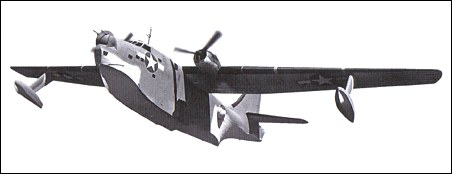
In 1940 the solution to German U-boats off the US east coast was deemed to be giant long-range flying-boat bombers. Boeing was the obvious builder with its track record of the prewar "Clipper" airliners and the Navy ordered 57 to start with. Boeing built a whole new plant at Renton by Lake Washington to build the Sea Ranger. The XPBB-1 prototype flew in July 1942 and was the largest twin-engined aircraft built to date, but the experiences of the Pacific War saw the War Department completely revise its strategy in favour of land-based bombers. The Sea Ranger programme was cancelled and the Renton plant was swapped with the army for one in Kansas. Renton subsequently built over 1000 B-29s and later C-135 jet tanker/transports and 707 airliners. The solitary Sea Ranger never flew a combat mission before it was mothballed and scrapped.
Jim Winchester "The World's Worst Aircraft", 2005
FACTS AND FIGURES
� Surprisingly for such a large flying boat, the XPBB was twin-engined. Defensive armament was only four machine guns but the bomb load was greater than a B-29's.
� The XPBB-1 s wing was based on that of the B-29 Superfortress. Some of rhe aerodynamics were inherited from Boeing's Model 314 Clipper.
� There was a plan to use special barges to catapult launch the Sea Ranger so as to increase the already long range, but this was never tested.
| Specification |
 |